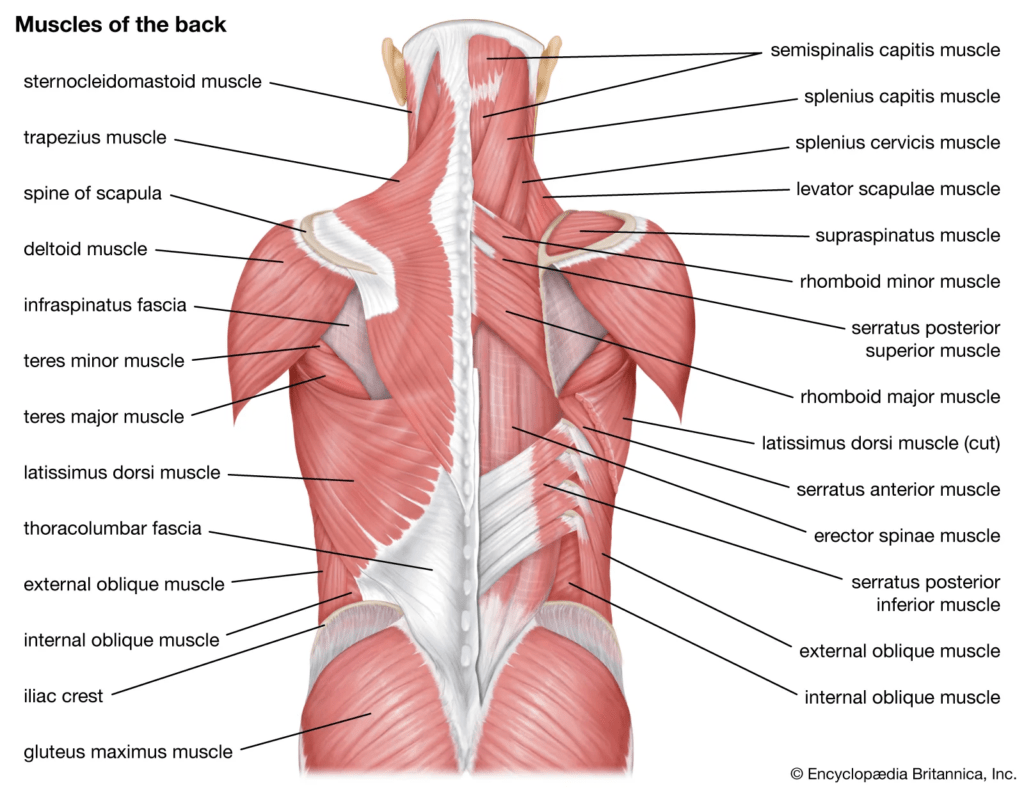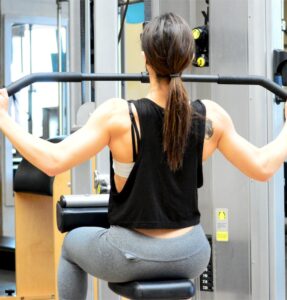In the brutal arena of rugby, where bone-crushing tackles, relentless scrums, and high-impact collisions are part and parcel of the game, players need more than just skill and strategy to succeed. They need physical prowess, and that includes having powerful back muscles. The back muscles in rugby aren’t just for aesthetics; they are the unsung heroes that provide stability, power, and resilience on the field.
Understanding the Anatomy of Back Muscles
Before diving into how to improve back muscles for rugby, it’s essential to understand the anatomy of the back.

The back is a complex region comprising several muscle groups, each with specific functions:
1. Trapezius
The trapezius muscle is a large, diamond-shaped muscle that spans the upper back and neck. It has three distinct parts:
- Upper Trapezius: This part is responsible for shrugging the shoulders, which is crucial when a player needs to leap for a high ball or contest a lineout.
- Middle Trapezius: It helps retract and stabilize the scapulae, which is essential for maintaining good posture and preventing shoulder injuries.
- Lower Trapezius: This part aids in pulling the shoulder blades down and together, vital for activities like tackling and scrummaging.
2. Latissimus Dorsi
Commonly known as the “lats,” the latissimus dorsi muscles are large, fan-shaped muscles that extend from the lower back to the upper arms. In rugby, they play a significant role in several actions:
- Arm Movement: The lats are responsible for powerful arm movements, such as throwing and passing the ball.
- Tackling: They are essential for delivering strong tackles, allowing players to wrap up opponents effectively.
3. Erector Spinae
The erector spinae muscles run along the length of the spine and consist of three columns:
- Iliocostalis: Located on the outermost side of the erector spinae, it helps with lateral flexion and extension of the spine.
- Longissimus: Runs parallel to the spine and assists in extending the vertebral column.
- Spinalis: Positioned closest to the spine, it also aids in extending the spine.
These muscles are fundamental for maintaining an upright posture, flexing, and extending the trunk, which are crucial for tackling, scrummaging, and maintaining stability during a game.
4. Rhomboids
Situated between the shoulder blades, the rhomboid major and rhomboid minor muscles are responsible for retracting and stabilizing the scapulae. They enable players to pull their shoulder blades together, essential for maintaining posture and preventing shoulder injuries.
The Importance of Back Muscle Function in Rugby
With a better understanding of the back muscle anatomy, let’s explore how each muscle group’s function directly impacts rugby performance:
1. Stability and Posture
The trapezius, erector spinae, and rhomboids work together to maintain stability and posture. A strong trapezius helps players shrug off opponents, while the erector spinae keeps the spine erect, reducing the risk of injury.
2. Power and Speed
The latissimus dorsi muscles are crucial for generating power in arm movements. They enable players to pass the ball with accuracy and tackle opponents forcefully. Additionally, the erector spinae muscles aid in explosive movements such as sprinting, essential for breaking through the opposition’s defense.
3. Endurance and Injury Prevention
A well-developed lower trapezius, erector spinae, and rhomboids provide the endurance needed to withstand the demands of rugby. They support players during scrums, rucks, and extended phases of play while reducing the risk of back and shoulder injuries.
4. Improved Agility
Maintaining flexibility and agility is critical in rugby. The trapezius, along with the other back muscles, helps players pivot, change direction, and evade opponents effectively. This agility can make the difference between scoring a try or being tackled.
Building Strong Back Muscles with Targeted Exercises
Now that we’ve established the significance of each back muscle group, let’s explore targeted exercises to strengthen them:
1. Trapezius Exercises
a. Shrugs
- Stand with a dumbbell in each hand.
- Lift your shoulders as high as possible, then lower them.
- Perform 3 sets of 12-15 reps.
b. Face Pulls
- Attach a rope to a cable machine at shoulder height.
- Pull the rope towards your face, retracting your shoulder blades.
- Perform 3 sets of 12-15 reps.
2. Latissimus Dorsi Exercises
a. Pull-Ups
- Hang from a pull-up bar with palms facing away.
- Pull your body up until your chin is above the bar.
- Perform 3 sets of 8-10 reps.
Discover different pull-up variations
b. Bent-Over Rows
- Hold a barbell with an overhand grip and bend at the waist.
- Pull the barbell to your lower ribcage, squeezing your shoulder blades together.
- Perform 3 sets of 10-12 reps.
Watch how to do bent-over rows
3. Erector Spinae Exercises
a. Deadlifts
- Stand with a barbell in front of you.
- Bend at the hips and knees, keeping your back straight, and lift the bar.
- Perform 3 sets of 5-8 reps.

b. Good Mornings
- Hold a barbell across your shoulders, behind your neck.
- Bend at the hips while keeping your back straight until your upper body is parallel to the ground.
- Perform 3 sets of 10-12 reps.
4. Rhomboid Exercises
a. Dumbbell Rows
- Hold a dumbbell in each hand, bend at the waist, and keep your back straight.
- Pull the dumbbells towards your hips, retracting your shoulder blades.
- Perform 3 sets of 10-12 reps per side.
Learn the dumbbell row technique
b. Face Pulls
- Attach a rope to a cable machine at shoulder height.
- Pull the rope towards your face, retracting your shoulder blades.
- Perform 3 sets of 12-15 reps.
Preventing Back Injuries and Maximizing Performance
While building strength is essential, injury prevention and optimizing performance should also be priorities for rugby players. Here are additional tips to protect your back and enhance your rugby performance:
1. Warm-Up and Stretch
Always warm up before training or a match. Stretching helps improve flexibility and reduces the risk of muscle strains and tears.
Explore dynamic warm-up exercises
2. Proper Technique
Ensure you’re using correct form during exercises and tackles. Poor technique can lead to back injuries and hinder your performance.
3. Rest and Recovery
Allow your body ample time to recover between training sessions. Overtraining can lead to fatigue and increase the risk of injury.
4. Seek Professional Guidance
Consider consulting with a sports physiotherapist or a strength and conditioning coach who can tailor a training program to your specific needs and help identify and address any biomechanical issues.
The Road to Rugby Excellence
In rugby, the importance of back muscles cannot be overstated. They are the backbone of a player’s physical prowess, providing stability, power, and resilience in the face of the sport’s intense demands. By incorporating a well-rounded training regimen, focusing on strength, agility, and injury prevention, rugby players can build and maintain the robust back muscles necessary to excel on the field.
So, whether you’re a seasoned rugby veteran or a novice looking to make your mark in the sport, remember that your back muscles are your allies in the quest for rugby excellence. Train them well, treat them with care, and they’ll carry you to victory.
Now, hit the gym, put on your boots, and embrace the transformative power of back muscle strength in rugby.
Remember, the game is won in the trenches, and strong backs lead the charge.
Explore the benefits of rugby training
Stay updated with the latest rugby news

